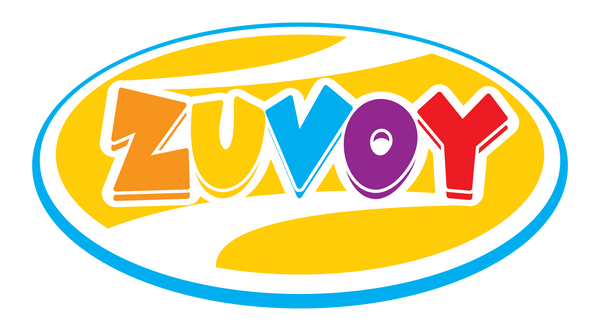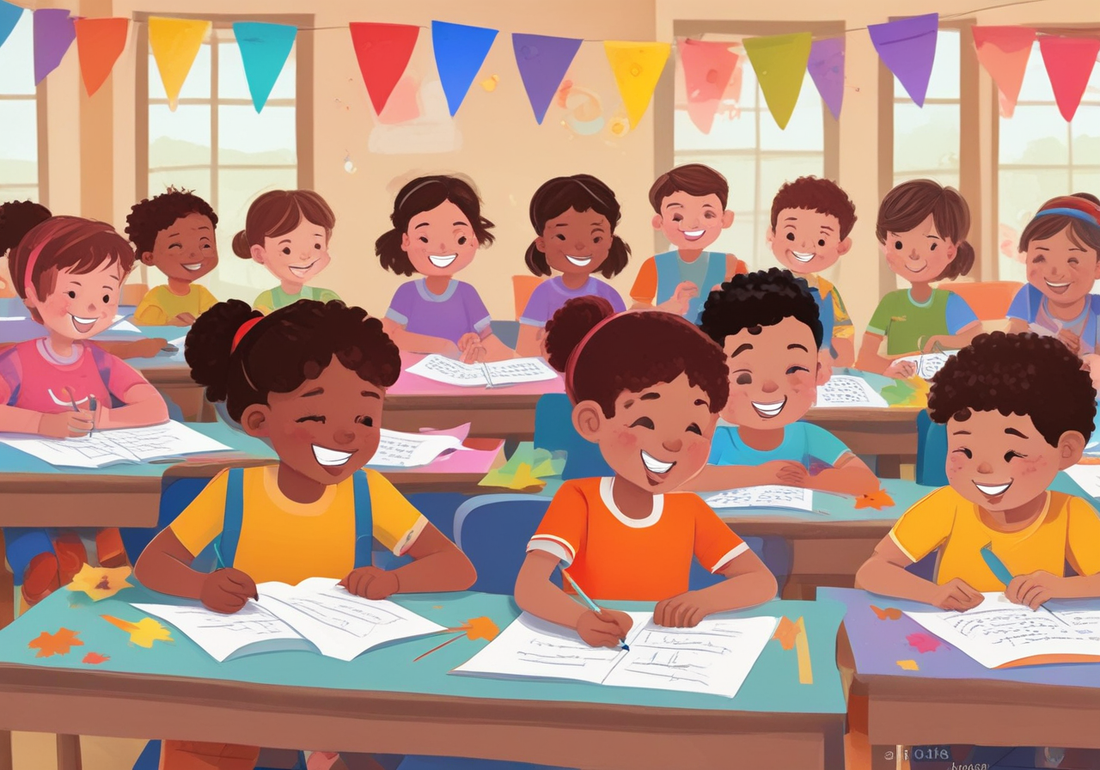Key Highlights
- Learn how to introduce the concept of gratitude to children in a meaningful way.
- Understand the importance of instilling a sense of thankfulness early in a child's life.
- Discover essential supplies and tips for setting up a successful 30-day gratitude challenge for kids.
- Explore strategies for creating a supportive environment at home to encourage participation.
- Follow a step-by-step guide to launching the gratitude challenge with clear goals and engaging activities.
- Find out how to sustain the momentum of the challenge and incorporate gratitude into daily life beyond the 30 days.
Introduction

Start a new journey with your child by taking part in the "30 Days of Gratitude for Kids" challenge. This activity is not just about saying thank you; it helps kids learn to appreciate and be aware of their feelings. By adding gratitude prompts to your daily routine, you teach kindness and compassion from the beginning. Join us in this fun way to create a family atmosphere full of thanksgiving and kind actions. Let’s begin this November with a joyful spirit of thankfulness!
Understanding Gratitude: A Foundation for Kids
Gratitude helps children have a positive mindset. When we explain gratitude clearly, kids can understand it better. Teaching thankfulness early helps them learn kindness, compassion, and mindfulness. November is a great time to start this journey because it focuses on thankfulness. Encouraging an attitude of gratitude can lead to a fun way, like a 30-day gratitude challenge, to help kids appreciate what they have.
Defining Gratitude in Child-Friendly Terms
Gratitude means being thankful for the good things in our lives. It is about liking the moments, people, and experiences that make us happy. When we encourage gratitude, kids can focus on the positive things around them and feel thankful. Teaching children to see and say thank you helps them grow a positive view of the world and makes them understand others better. When we highlight gratitude in ways kids can understand, we build a foundation for appreciation and mindfulness in how they act every day.
The Importance of Teaching Gratitude Early On
Instilling an attitude of gratitude in children early on is very important for their well-being. Teaching kids to notice the good things in life helps them be thankful and also encourages empathy, generosity, and mindfulness. You can start by using gratitude prompts or a gratitude journal. This teaches children to think back on their day and see the positive side. Developing a mindset of thankfulness lays a strong base for their emotional growth and helps them show compassion to others.
Preparing for the 30 Days of Gratitude for kids
Essential supplies for a gratitude challenge are simple. You will need a gratitude journal, colorful markers, stickers, or a gratitude jar. To create a supportive home, involve each family member in the challenge. You can encourage acts of kindness and thanksgiving. Making it a fun way to show gratitude within the family is important. Set the stage for mindfulness and thankfulness during November. Help your child with tools that promote kindness and compassion. This supports a positive attitude of gratitude.
Essential Supplies for a Gratitude Challenge
To improve your 30 days of gratitude for kids, give them a gratitude journal or jar. They can use it to write down their daily blessings. Add colorful pens, stickers, and uplifting quotes to make it more fun. Gratitude prompts can help them think creatively and start conversations. You can include arts and crafts materials too. This is a fun way to show gratitude visually. Encourage all family members to join in acts of kindness. This will help everyone feel closer and share in the spirit of thanksgiving.
Creating a Supportive Environment at Home
- Encourage a happy home by using gratitude journals or a colorful gratitude jar. Family members can write down their moments of thankfulness each day.
- Add acts of kindness and special thanksgiving activities to create a caring environment.
- Use positive support to notice acts of gratitude and kindness in the home.
- Make November a month for kindness and gratitude.
- By building a cheerful and supportive place, kids will accept the attitude of gratitude more easily, turning this challenge into a fun family activity.
Step-by-Step Guide to Launching Your Challenge

- Sit down with your child to set clear goals for the next 30 days. Help them think about what gratitude means to them.
- Use fun activities like starting a gratitude journal or making a gratitude jar. Make sure it is engaging!
- Daily reflections are important. Share your moments of gratitude with each other. Talk about how it felt to focus on thankfulness.
Step 1: Setting Clear Goals with Your Child
When you start a 30-day gratitude challenge for kids, make sure to set clear goals with your child. Talk to them about what gratitude means to them. Help them think of specific things they are grateful for. Ask them how being thankful can make them feel better. By including your child in this first step, you create a strong base for a special journey focused on gratitude together. This creates a positive vibe and helps you both understand why the challenge is important.
Step 2: Introducing Gratitude & Kindness Activities
Engage your child in fun gratitude activities. You can create a gratitude jar or a journal together. Use gratitude prompts to start talks about what things they are thankful for. Encourage them to show acts of kindness to family members and others. You might also want to add mindfulness practices or thanksgiving crafts. This helps your child build thankfulness and compassion. Making gratitude a daily habit is a great way to teach children to appreciate what they have.
Step 3: Daily Reflections and Sharing
Encourage your child to reflect daily on gratitude. You can use gratitude prompts or a gratitude journal to inspire thoughtful reflections. Make sharing enjoyable by talking about what each family member is thankful for. You might consider a gratitude jar where everyone drops in notes of gratitude. Doing acts of kindness can also create a sense of thankfulness. Stress the importance of mindfulness in these daily activities to help your child build an attitude of gratitude.
Keeping the Momentum: Tips and Tricks
Stay involved in your child's journey of gratitude. Celebrate their small wins and show how much they have grown. Use fun gratitude prompts to keep things exciting. Think about using a gratitude jar where everyone can drop in notes of thanks. Encourage kindness and reflection even after the 30 days. This will help build a lasting attitude of gratitude. By adding mindfulness to your daily routine, you can teach your child thankfulness and compassion that last.
Encouraging Consistency and Participation
To keep kids engaged during the 30 days of gratitude, it's important to participate every day. Encourage everyone to think about and share moments they feel grateful for. Make this a family habit that includes all members. Use gratitude prompts to start conversations and enhance the experience. Celebrate small acts of kindness and teach the importance of thankfulness. Add fun ways to show gratitude, like using a gratitude jar or keeping a gratitude journal. By building a culture of mindfulness and compassion, this challenge can be a rewarding journey.
Incorporating Gratitude into Everyday Life Beyond the Challenge
After finishing the 30-day gratitude challenge, keep up the culture of thankfulness. Encourage your child to say what they are grateful for every day, like at dinner or bedtime. Include acts of kindness in your routines. This could be as simple as giving compliments or helping a family member.
Create a gratitude jar where everyone can share moments of thankfulness. Highlight how important it is to be mindful and kind to others. Make November a month of giving thanks by continuing the practice of gratitude prompts and reflections. Let's keep the spirit of gratitude alive all year long.
Conclusion
Fostering an attitude of gratitude in kids is a great way to teach positive values and mindfulness. The 30 days of gratitude challenge for kids helps families show thankfulness and kindness each day. C
Frequently Asked Questions
How can I make gratitude fun for kids?
Kids can learn about gratitude by doing fun activities. They can make gratitude journals, write thank you notes, or use a gratitude jar. These creative tasks and family chats can make learning about gratitude a fun time for children.
What if my child loses interest mid-challenge?
If your child stops being interested during a challenge, try adding new activities or let them help choose what to do. Open communication is important; it helps you understand how they feel. Keep a positive attitude and be ready to change things to fit your child's likes and needs.
Can gratitude challenges have long-term benefits for my child?
Gratitude challenges can teach kids important values. They help build empathy and a positive attitude. Studies show that practicing gratitude can enhance mental health and strengthen relationships. This, in turn, results in lasting benefits for your child's emotional growth and happiness.
How to adapt the challenge for different age groups?
- Change activities to fit different age groups.
- For younger kids, use pictures and tell stories.
- Older children can write in journals or take part in talks.
- Adjusting the challenge helps all kids learn and join in well.

